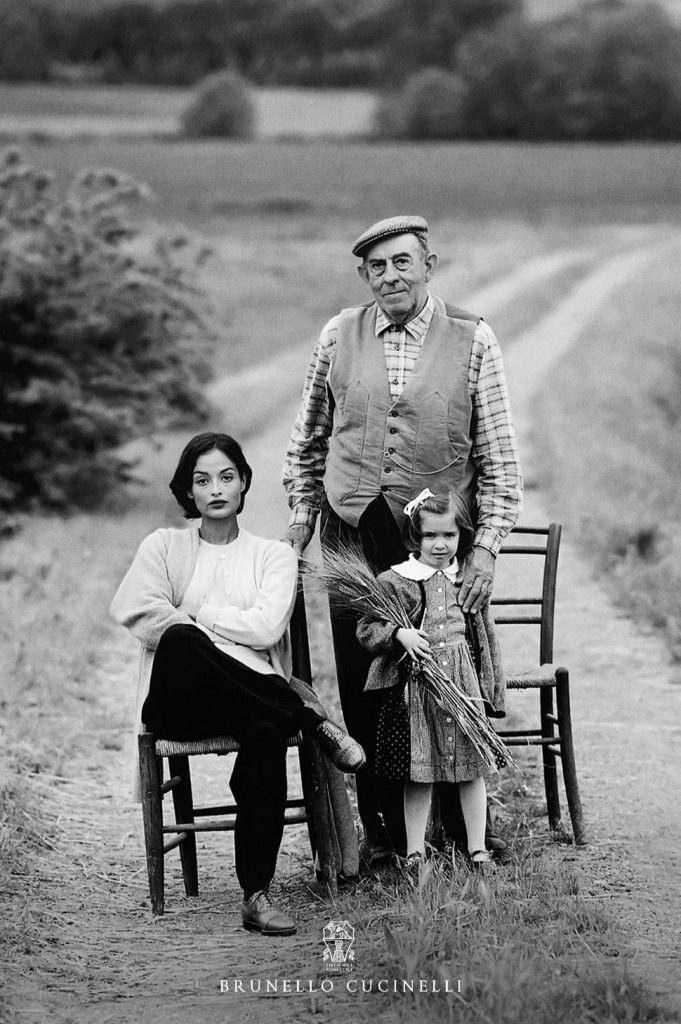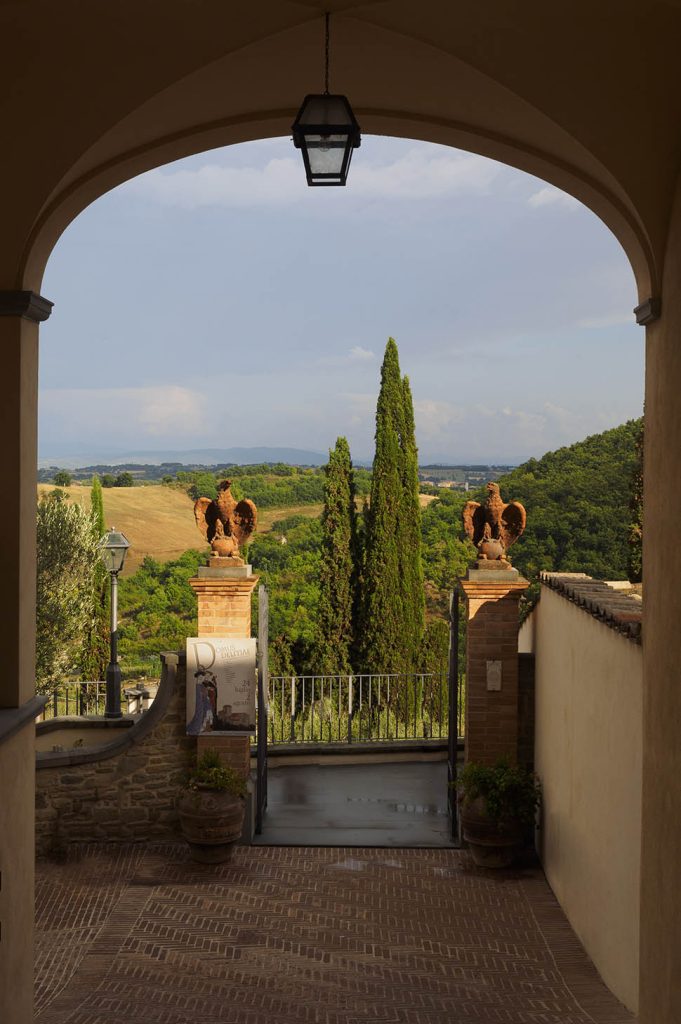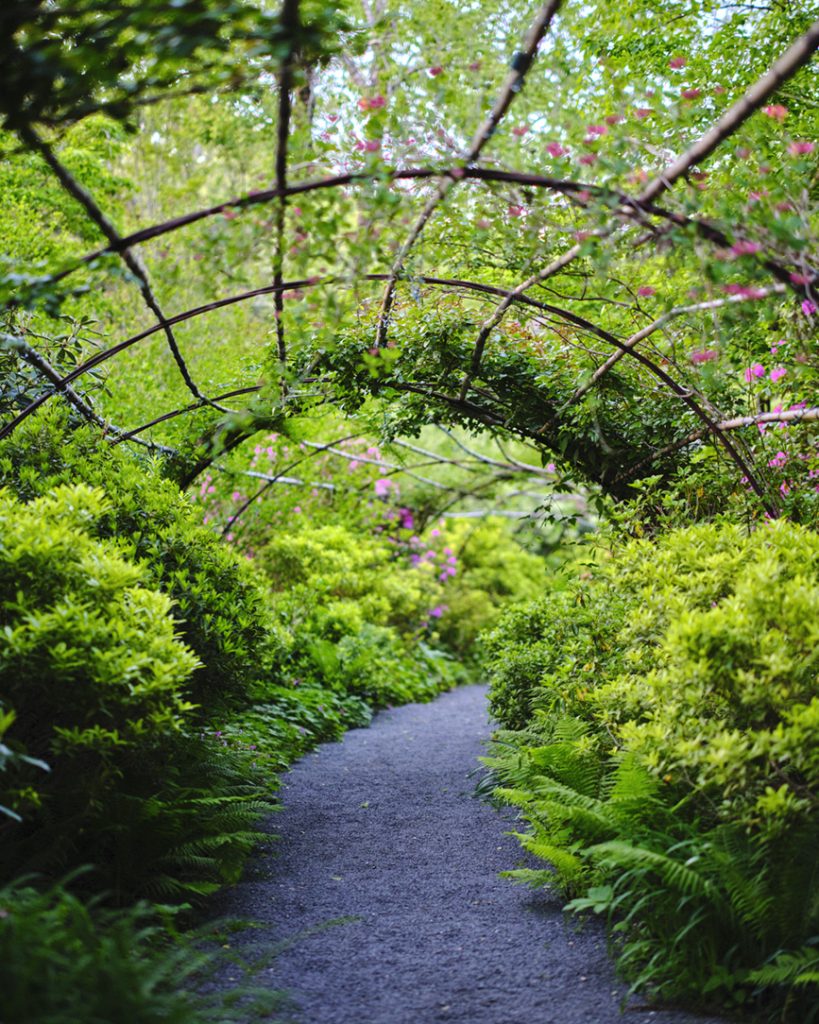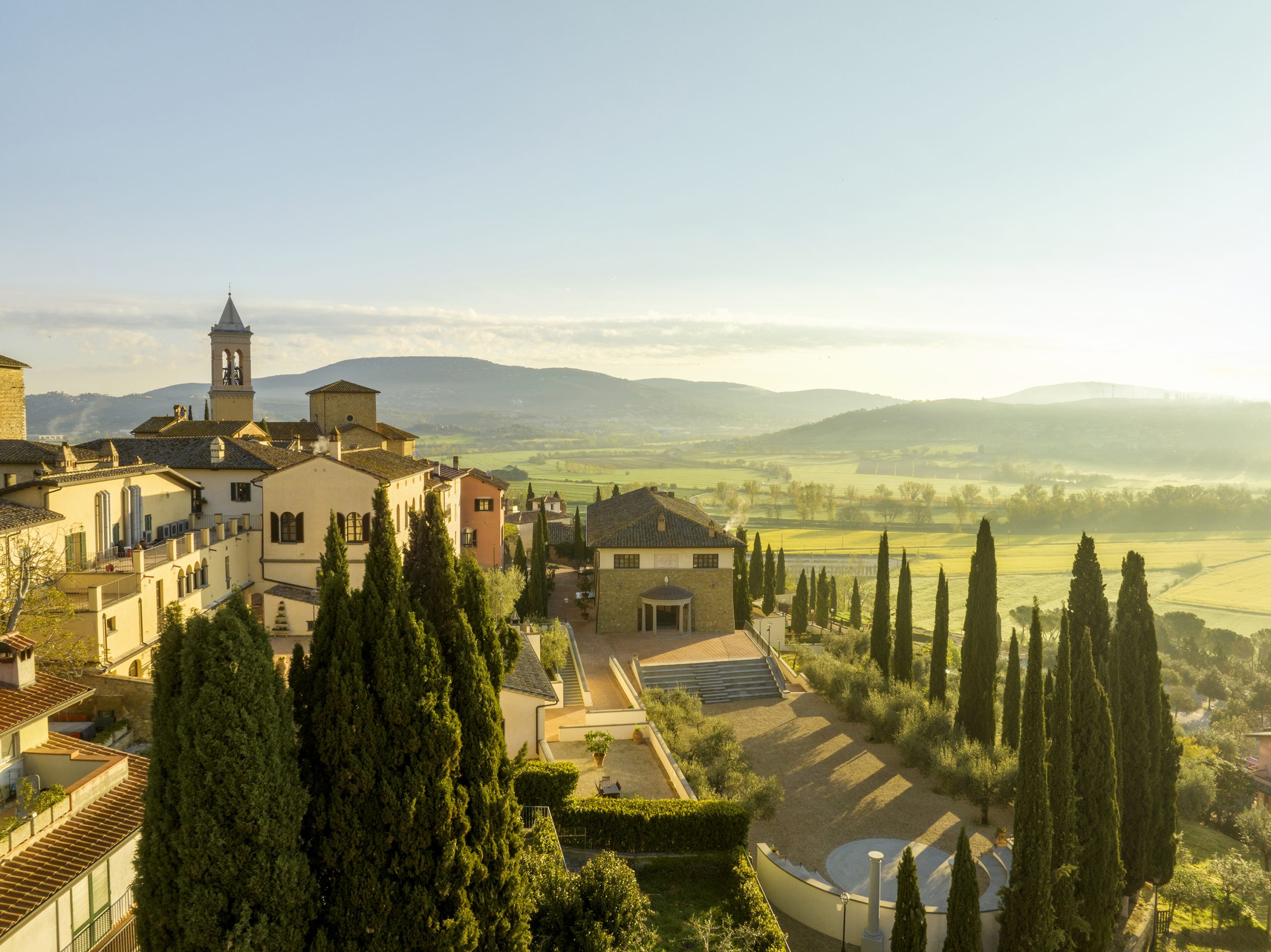At first glance, the village of Solomeo is like many you may find in central Italy. Rolling green hills surround the Umbrian town’s stone buildings, dotted with olive groves and cypress trees. Picture perfect, yes, but perhaps the last place you’d expect to find a multi-million-dollar company.
Yet, in the valley below the medieval hamlet lies the Brunello Cucinelli headquarters, and on the village outskirts are state-of-the-art facilities where artisans work meticulously on the brand’s luxe apparel and accessories.
Forty years ago, Solomeo—and many villages like it—was facing population decline, poverty, and deterioration due to neglect. In 1982, Cucinelli, who grew up in the region, made what was at the time a controversial decision—he would buy Solomeo’s castle and restore it, turning it into his company’s headquarters.

A Brunello Cucinelli campaign from 1995.
Over the past four decades, the designer has lovingly restored the 173-acre Umbrian village, bringing the medieval and Renaissance–era buildings back to their former glory. The aforementioned castle has since become a school which teaches the village’s crafts and traditions, and Cucinelli has also restored the 12th century church; built a theater; added a winery; and erected a travertine monument labeled a “Tribute to Human Dignity.” Currently under construction is also a library which will house books on philosophy, history, architecture, and more. In lieu of billboards, the village is dotted with plaques displaying quotes from the likes of Shakespeare, Confucius, Socrates, and Kant.
The goal was not to turn Solomeo into a bustling modern city, but instead to bring it back to its roots, making it an attractive place to live and work through culture, community, and a commitment to sustainability.
This philosophy extends to the way the brand’s business is run. Beyond crafting quality pieces meant to be mended and last generations, Brunello Cucinelli practices what the brand calls “Humanistic Capitalism” and “Human Sustainability.”
“My early years spent in the countryside, my life in a farming family, left the seed and then the sprout of Humanistic Capitalism and Human Sustainability…I understood that everything we had came from the Earth,” said Cucinelli to world leaders at the G20 Summit. “There was a correspondence between what we got from our work and what we gave to our neighbor…after the harvest, my grandfather would give the first bale of wheat to the community, an ancient symbol of the balance between profit and giving back.”

In addition to reinvesting profits into the community, Cucinelli uses sustainable and locally-sourced materials, controls emissions, pays fair wages, and values slower growth over unsustainable development. The impact of company activities on the Earth is heavily weighed, and any restoration or construction must come with a landscape and maintenance plan.
Cucinelli takes the landscape of Solomeo seriously, working with the local flora to create several parks surrounding the village. Over the course of eight years beginning in 2010, three parks were completed, including orchards; wheat, alfalfa, and sunflower plantations; an olive grove with an olive oil mill; and a vineyard cultivated using ancient techniques and inspired by Renaissance-era gardens. Rosemary hedges, cypresses, and blooming rose bushes connect each portion of the village, offering grounding greenspace wherever you might be.
“If we can change the desired aesthetic for gardens, we allow everyone to step into a world of joy and wonder, where nature is not an adversary but our partner,” says Edwina von Gal in the latest issue of PALMER On the Road, echoing Cucinelli’s sentiment of putting the planet first. Von Gal, a landscape designer and activist, founded Perfect Earth Project in 2013, a non-profit organization that promotes sustainable landscaping.
Together with Von Gal and PALMER, Brunello Cucinelli hosted an al fresco dinner in the garden of a private home in East Hampton this past weekend in support of Perfect Earth Project’s commitment to nature-based landscaping.

A garden in East Hampton by Edwina von Gal. Photograph by Adrian Gaut.
Events like these are just one of the ways Cucinelli promotes sustainability. Through The Brunello and Federica Cucinelli Foundation, the Cucinelli family supports initiatives that safeguard sites with historic or aesthetic significance, promote appreciation for art and culture, and conserve land. Most recently, Cucinelli has his eye on another village—the 13th century town of Castelluccio di Norcia, which was critically damaged in a 2016 earthquake. The foundation has donated the restoration project to Castelluccio, which will modernize the historic site while keeping its heritage intact by using traditional construction techniques.
Slowly, but surely, Brunello Cucinelli is bringing craftsmanship and generational thinking back to Umbria. Hopefully, the rest of the world will follow.



